If you speak to a runner with hip pain, you’ll know they’ve tried everything from strength exercises to foam rolling, only to be left frustrated.
If you ARE a runner with hip pain…well, you know how annoying and persistent the pain can be.
To finally get rid of your hip pain, you need to understand three key points: what type of hip pain you have, how to avoid stirring it up and how to support the area while it resolves.
It’s also crucial that you remember most hip pain comes on gradually over weeks due to a persistent overload.
So the solution is to get the right balance of loading, AND to maintain that for a prolonged period, to reverse the process.
Need expert advice to get the perfect shoe?
We’ve combined the expertise of a Sports Physiotherapist with a running coach to bring you accurate advice, for FREE!
This app, on Android and ios, offers expert advice on the perfect running shoes for you and your niggles.
The app can also diagnose injury and suggest running sessions that won’t flare up any current niggles.
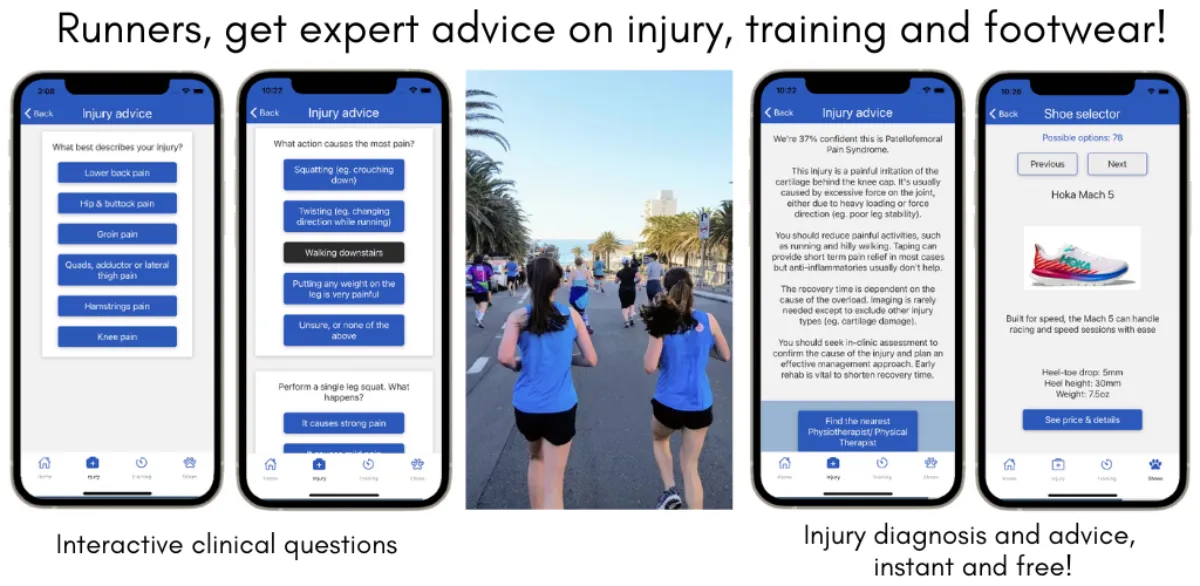
What causes hip pain in runners?
Complex biomechanical answers to this question can be found everywhere on the web. But the simple truth is, well, simpler.
There are two types of hips that cause hip pain in runners:
- Flexible hips that are poorly controlled by muscles, and
- Stiff hips that don’t have enough free movement for running.
In the first scenario, you can have a mobile, flexible hip that moves around freely. But due to a lack of strength, endurance or muscle coordination, the hip ends up moving excessively during running. It leads to muscle soreness (from overload) and tendon or joint soreness (due to the excess and/or rapid movement on landing).
For the 2nd type of runner with hip pain, the hip doesn’t have enough range to move freely during running. The muscles would then need to work extra hard to protect the joint hitting its end of range, or the joint hits its end of range. Overworked muscles leads to muscle soreness and joint compression leads to joint soreness.
So both types of hip pain in runners will lead to muscle, tendon or joint soreness, even though they have different underlying causes.
How can running shoes help a runner with hip pain?
For most types of hip pain in runners, running shoes can offer a fairly quick improvement by supporting the overload that’s occurring during running.
Supportive shoes can help reduce muscle fatigue (particularly in hip rotation control muscles like the Gluteals), reduce the rapid load on hip tendons and make it easier to control the hip to avoid it reaching the end of its range.
The way that a shoe can achieve all of that is due to the connection between your foot rolling inwards (called “pronation”) and your leg rotating inwards.
To see/feel the connection, stand up and try to push your foot arch flat to the floor. What you’ll notice is that your knee and leg twist inwards in order to push the arch to the floor.
The same occurs in reverse – when you’re running and your arch flattens, it rotates the leg inwards and creates work for the hip muscles to control that rotation.
Choosing the best running shoes for a runner with hip pain
Each of the running shoes for hip pain listed below offers a different feel and fit, and it’s important to match that with your personal preference.
If you like plush running shoes, your body (and brain) will respond best to them and you’ll move better when running or walking.
If you prefer to feel the ground and have a more responsive shoe, your control of the movement of the leg will improve with a lower profile or firmer shoe.
Either way, you don’t need to be uncomfortable just to get some support from the shoe.
In addition, you can add some supportive insoles to running shoes for extra help but for orthotics, it’s worth seeking professional advice before investing.
Best road running shoes for a runner with hip pain
Asics GT-2000
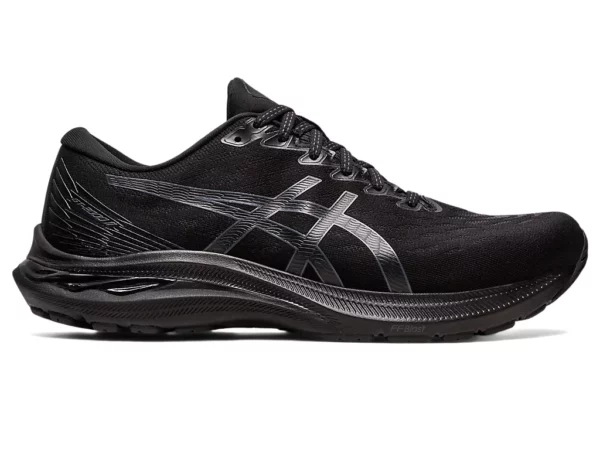
Stack height: 31mm, heel-toe offset: 8mm, weight: 277g(m), 252g(f)
Our recommendation: one of the best all-rounders, for those who like a balanced mix of support and cushioning.
The 2000 has been the most popular shoe model sold worldwide for many years, and for good reason.
It provides noticeable stability (without feeling too firm) with good cushioning; it’s also better priced than Asics’ other contender, the Kayano.
The other massive bonus for the 2000 is that it comes in width options – you can get standard (B for women, D for mens) or wide fit (2E for men, D for women).
For the latest colors, best prices and quickest delivery, head here for women’s and here for men’s Asics GT-2000.
Saucony Guide
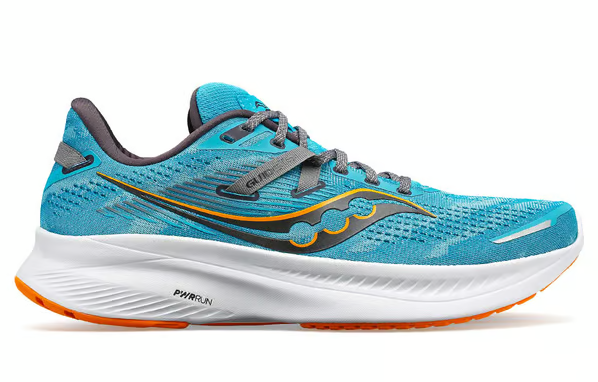
Stack height: 35mm, heel-toe offset: 8mm, weight: 269g(m), 235g(f)
Our recommendation: perfect for runners who like a light feel with mid-level support.
Get the latest colors and best prices here for women’s and here for men’s Saucony Guide.
Saucony’s Guide provides comfortable stability for those who have a narrow-ish or straight foot shape.
It’ll be a better option than Kayano for anyone who prefers the fit of Nike, Adidas and (obviously) Saucony as the shape of the shoe is not as curved and the standard width is a little slimmer.
Saucony has made huge in-roads recently with the Guide after some recent design updates and is becoming more popular each year.
Hoka One One Arahi
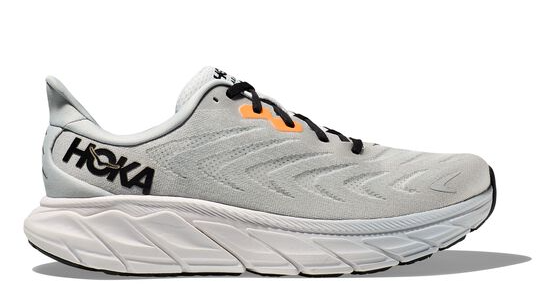
Stack height: 35mm, heel-toe offset: 5mm, weight: 264g(m), 218g(f)
Our recommendation: for Hoka fans who are looking for a plush shoe with a hint of support.
FOr anyone who knows the reputation of HOKA, the Arahi continues to provide that plush feel but adds additional stability to reduce foot and hip instability issues.
It’s a unique combination of plush cushioning and moderate support, so it can take some getting used to. Feedback from runners is that it sometimes takes some time for the shoe to “loosen up” and soften.
The Arahi seems perfectly suited to a runner with hip pain and would have to be in most Physiotherapist’s recommendations as it also supports bad knees and can help with shin pain.
For the latest colors, best prices and quickest delivery, head here for women’s and here for men’s Hoka Arahi.
Asics Kayano
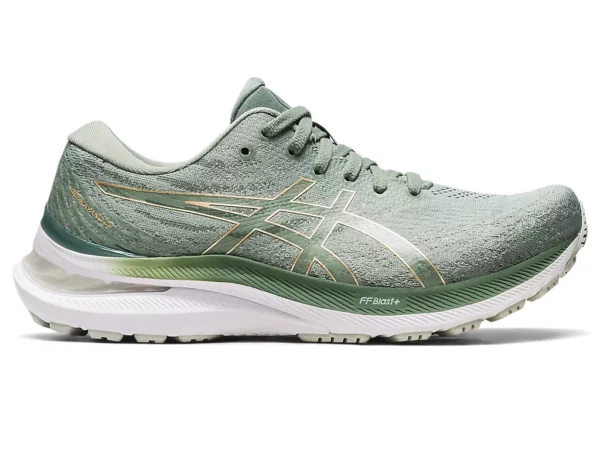
Stack height: 35mm, heel-toe offset: 10mm, weight: 317g(m), 260g(f)
Our recommendation: Kayano is best suited to runners who need genuine support in a high performance running shoe.
Get the latest colors and best prices here for women’s and here for men’s Asics Kayano.
Asics Kayano has to be one of the most well-known shoes on the market! It’s been around for over 30 years and still going strong as the go-to option for runners needing stability.
It’s got firm stability with generous cushioning (more supportive but less cushioned than HOKA Arahi). It would be as comfortable on a long run as doing intervals for a runner with hip pain as it’s supportive but not too heavy.
With that extra stability, it helps control foot pronation and hip rotation during running, two of the culprits behind painful hip tendons and joint compression issues (such as hip impingement).
Brooks Adrenaline
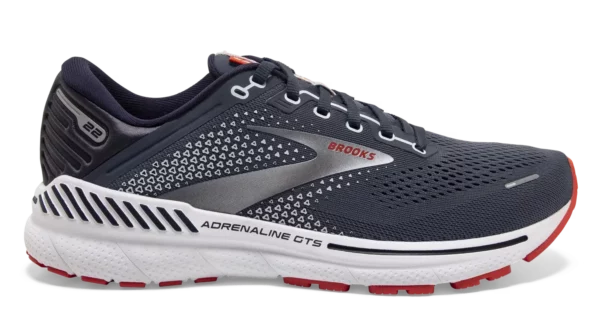
Stack height: 36mm, heel-toe offset: 12mm, weight: 289g(m), 249g(f)
Our recommendation: lighter and with more bounce than the previous version, they’ll suit runners looking for a comfortable cushy ride.
The Adrenaline underwent a big redesign in 2020/2021, which made them less supportive but lighter and sleeker.
The feedback is that the new model is lighter, more comfortable and better fitting. It’s also available in a wide fit (D for women, 2E for men – for more shoes in a wide fit, see these options for women’s and men’s shoes)
It used to be one of the best options for a runner with hip pain but the recent design changes have shifted it towards a more cushioned approach.
For the latest colors, best prices and quickest delivery, head here for women’s and here for men’s Brooks Adrenaline.
If you loved the old Adrenalines for their support, you may be better off exploring the Mizuno Wave Inspire which has support and is also available in a wide fit.
For US buyers, head here for a huge range of regular and wide fit color options.
UK runners can find Inspires here with free delivery/returns.
Aussie buyers can see the best options in different widths here.
New Balance Fresh Foam 860
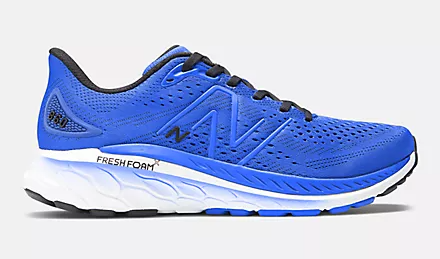
Stack height: 35mm, heel-toe offset: 10mm, weight: 297g(m), 258g(f)
Our recommendation: for runners who like a firm base without too much weight.
A good all-round shoe with a mix of structure and comfort. If you suit the shape of Brooks or New Balance, this shoe should fit well.
For the latest colors, best prices and quickest delivery, head here for women’s and here for men’s New Balance 860.
Mizuno Wave Rider
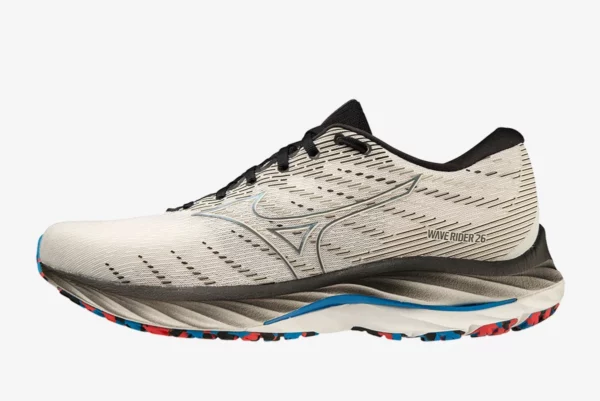
Stack height: 38mm, heel-toe offset: 12mm, weight: 286g(m), 238g(f)
Our recommendation: a nicely balanced running shoe for mid to high mileage runners who like a shoe with some structure.
High heel-toe offset of 12mm, high stack height of 38mm and smooth lug-type road grip, the Rider is also available in a wide fit.
While the Rider doesn’t offer support, the high heel-toe offset is great for a runner with hip pain due to very stiff ankles (reduced dorsiflexion) as that tends to cause a forced inwards movement of the hips during running.
The Rider will fit anyone who likes Mizuno or Asics shoes as they have a similar shape.
For the latest colors, best prices and quickest delivery, head here for women’s and here for men’s Mizuno Rider.
Brooks Ghost
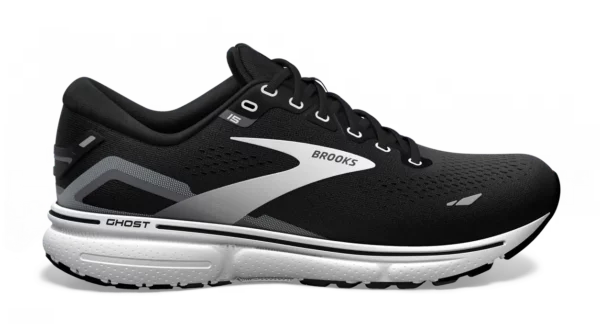
Stack height: 35mm, heel-toe offset: 12mm, weight: 272g(m), 238g(f)
Our recommendation: Ghost is a great running shoe for those who like firmer cushioning and protection underfoot.
Get the latest colors and best prices here for women’s and here for men’s Brooks Ghost.
Another shoe with a high heel-toe offset of 12mm, neutral/no support, high stack height of 36mm and smooth road grip.
The Brooks Ghost is available in narrow, standard and wide fit and will help runners with hip pain due to stiff ankles, due to its very accommodating high drop.
Fits well for those who like Brooks or New Balance models.
Best trail running shoe for runners with hip pain
Salomon Speedcross
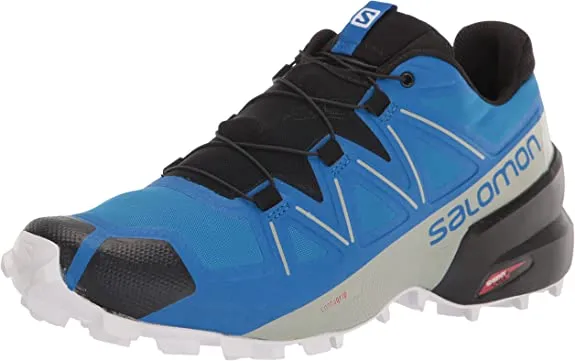
Salomon’s Speedcross is designed for rugged, mountainous conditions, which makes it one of the best off-road options for a runner with hip pain who needs support on trails.
The grip has over-sized lugs, so you won’t be able to use it on road without shredding the lugs off pretty quickly.
I don’t recommend the waterproof Goretex version (denoted as “GTX” in the model name) – it’s good for water that doesn’t flow over the top of the shoe (about 8-10cm deep) or moist grass but it’s useless for most creek crossings and tends to retain water. The Goretex model is also prone to overheating in warmer weather.
For the latest colors, best prices and quickest delivery, head here for women’s and here for men’s Salomon Speedcross.
Disclaimer for Best Shoes For a Runner with Hip Pain
**Special note: this article has Physiotherapist-recommended products with affiliate links to trusted vendors, selected for their fast & reliable service and great prices. The article was written prior to sourcing the affiliate links and the links in no way influence our recommendations.


